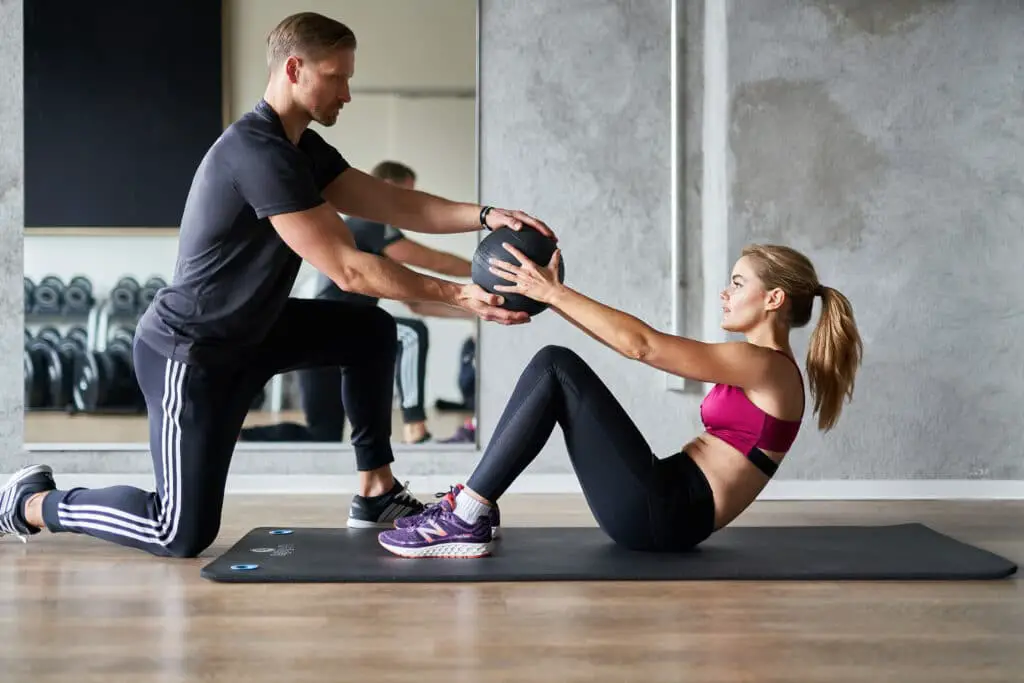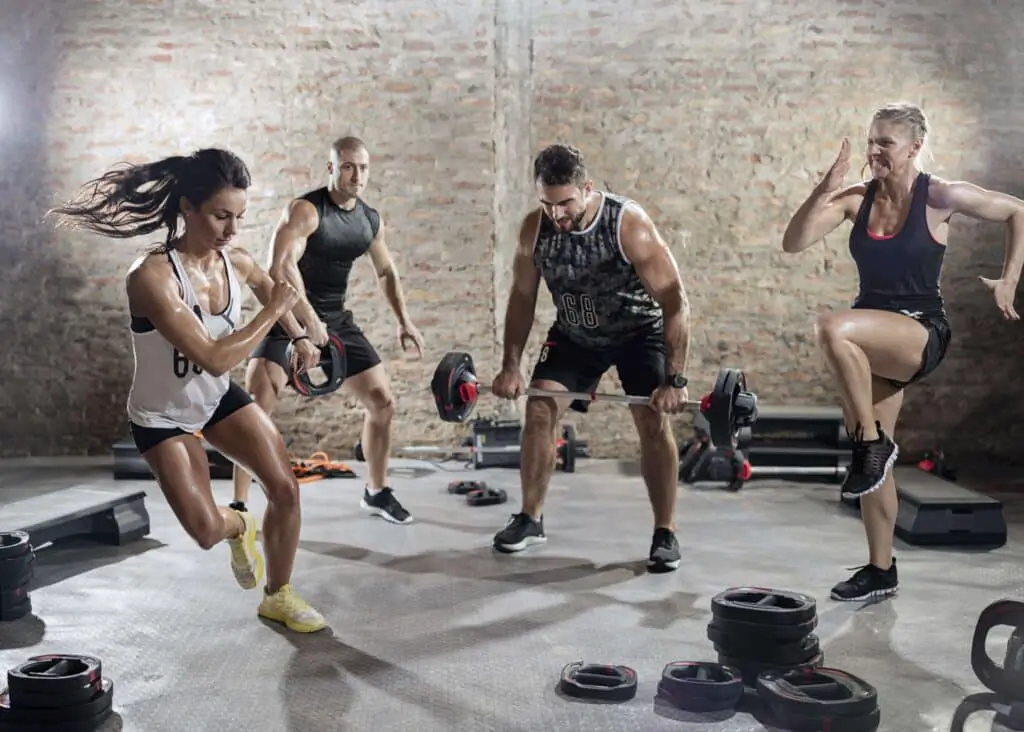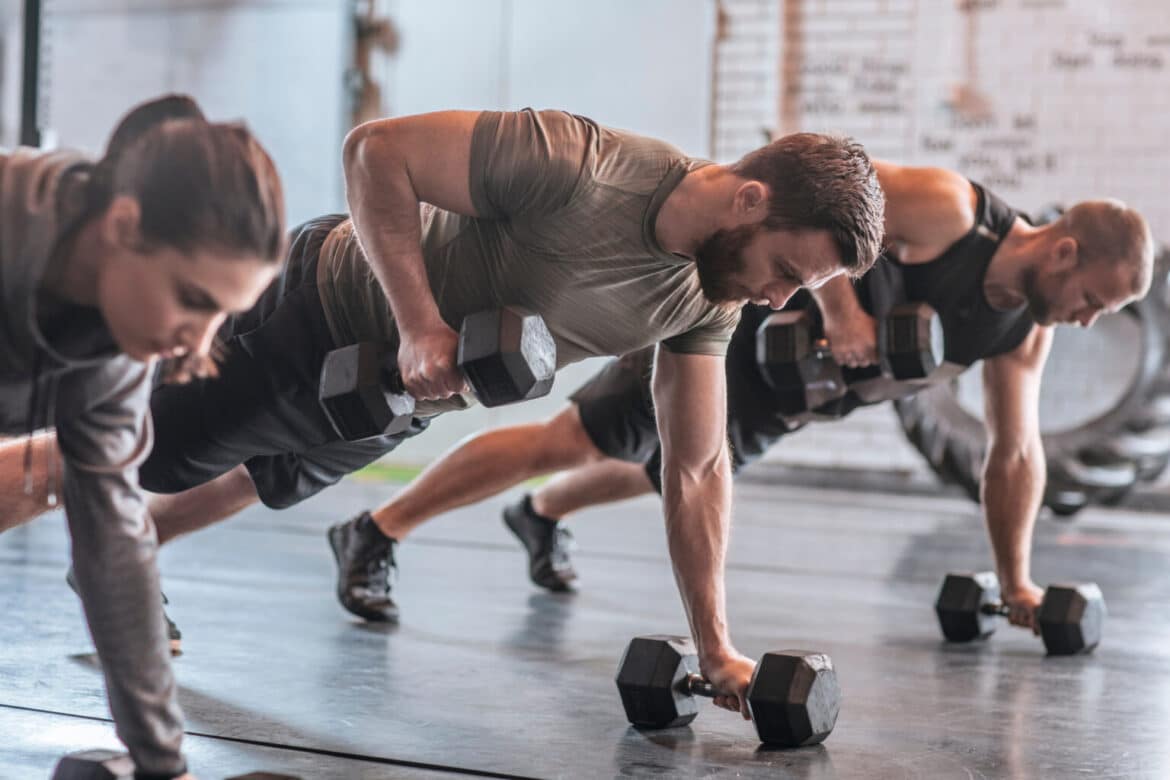Introduction
What’s The Difference Between Functional And Traditional Strength Training: Strength training is a fundamental component of any well-rounded fitness routine, but there are different approaches to achieving strength and muscle gains. Two prominent methodologies that often come into focus are functional strength training and traditional strength training. While both aim to enhance physical strength and overall fitness, they diverge in their methods, objectives, and the way they translate into real-world applications. In this exploration, we will delve into the key distinctions between functional and traditional strength training, shedding light on the unique benefits and considerations associated with each approach. By the end, you’ll have a clearer understanding of which path may align best with your fitness goals and lifestyle. Functional strength training and traditional strength training represent distinct philosophies within the realm of fitness. Traditional strength training, often characterized by structured routines involving isolated exercises and heavy weights, primarily focuses on building muscle size and raw power.
This approach frequently employs exercises like bench presses, bicep curls, and leg extensions to target specific muscle groups systematically. On the other hand, functional strength training emphasizes functional movement patterns that mimic real-life activities, promoting enhanced overall physical functionality. This approach often incorporates compound exercises that engage multiple muscle groups simultaneously, such as squats, deadlifts, and kettlebell swings. The goal is to improve not only strength but also balance, flexibility, coordination, and endurance, making it particularly valuable for daily tasks, sports, and preventing injuries. Throughout this exploration, we will delve deeper into the principles, advantages, and limitations of these two strength training methodologies, enabling you to make informed decisions about which approach aligns best with your fitness goals and lifestyle.
Whether you seek to sculpt your physique, enhance your athletic performance, or simply improve your day-to-day functionality, understanding the differences between functional and traditional strength training is essential for maximizing your fitness journey. This approach often adheres to the principle of progressive overload, where the goal is to increase resistance or weight over time to stimulate muscle growth and strength. Workouts are typically structured, with a focus on sets and repetitions. Functional training emphasizes movement quality over sheer weight lifted. It often involves a variety of movements, including dynamic and multiplanar exercises that challenge balance and coordination. Instead of sets and reps, workouts may emphasize performing exercises for time or incorporating functional circuits.

What is the difference between functional and traditional strength training on Apple Watch?
Choose Functional Strength Training when performing dynamic strength sequences for the upper body, lower body or full body, using small equipment such as dumbbells, resistance bands and medicine balls, or with no equipment at all. Traditional strength training is for weightlifting type workouts.
For traditional strength training, you can manually select the “Strength Training” workout mode and specify your workout goal (e.g., “Open Goal” or “Time”) to track your sets and repetitions or workout duration.
For functional strength training, where exercises may involve bodyweight movements, kettlebell swings, or other functional movements, you can also use the “Strength Training” mode or choose other relevant modes such as “Functional Strength Training” or “HIIT” (High-Intensity Interval Training) to monitor your workout.
Apple Watch supports various third-party fitness apps that provide more specialized workout tracking for different styles of strength training. Some apps may offer dedicated “functional” or “cross-training” modes, while others focus on traditional strength training.
Regardless of whether you’re doing functional or traditional strength training, Apple Watch continuously monitors your heart rate during workouts. It also tracks your active calorie burn and movement through the Activity Rings feature, helping you stay motivated and measure the intensity of your workouts.
What is the difference between functional and traditional strength training?
The key difference between the two is functional training encompasses a whole breadth of more dynamic and full-body movements that prioritises compound movements over focussing on one muscle at a time on a machine. You’re training your body as a single unit with functional movements.
The primary objective of functional strength training is to enhance overall functional fitness. This approach emphasizes movements that mimic real-life activities and aims to improve your ability to perform daily tasks, sports, and other physical activities more efficiently.
Traditional strength training primarily focuses on building muscle size and raw power. It often aims to maximize muscle hypertrophy (growth) and strength in specific muscle groups. This approach is commonly associated with bodybuilding and powerlifting.
Functional training incorporates exercises that involve multi-joint movements and engage multiple muscle groups simultaneously. Common exercises include squats, deadlifts, kettlebell swings, and bodyweight exercises. These exercises promote better balance, coordination, and functional capacity.
Traditional training often involves isolation exercises that target specific muscle groups, such as bench presses, bicep curls, and leg extensions. These exercises are designed to isolate and develop individual muscles.
What is traditional strength training?
Traditional strength training isolates muscles and works them to exhaustion using heavy weights or the machines you see at the gym. A typical training session might be three to five sets of eight to 12 repetitions per exercise, says Ashenden.
Traditional strength training often involves isolation exercises that target specific muscle groups. For example, exercises like bicep curls primarily work the biceps, while leg extensions target the quadriceps.
A central principle of traditional strength training is progressive overload. This means gradually increasing the resistance or weight lifted over time to stimulate muscle growth and strength gains. This can be achieved by adding more weight, performing more repetitions, or increasing the intensity of the exercises.
Traditional strength training workouts are typically structured and may involve performing sets and repetitions of specific exercises. For example, a workout plan might include three sets of ten repetitions of bench presses.
Traditional strength training is known for its ability to promote muscle hypertrophy. When resistance is applied to muscles, it creates tiny tears in the muscle fibers. During the recovery process, the muscles repair and grow larger and stronger, leading to increased muscle size.
Do bodybuilders have functional strength?
Same thing for bodybuilding, most bodybuilders include functional exercises in their training, it’s those that don’t that are caught lacking in the department of coordination and body control. Chasing aesthetic gains before learning how to move is like repainting a car that needs a new engine.
Bodybuilders primarily focus on maximizing muscle hypertrophy, which involves increasing the size of their muscles. Their training routines often prioritize isolation exercises that target specific muscle groups. While this leads to remarkable muscle development, it may not always directly translate into functional strength.
Some bodybuilding exercises involve limited ranges of motion, and the use of machines can restrict natural movement patterns. This can result in less-developed functional strength in terms of flexibility, mobility, and the ability to perform dynamic movements.
The goals of bodybuilders are primarily aesthetic, centered around sculpting their bodies to achieve a specific look. While they may have immense muscular strength within their chosen movements, their training routines may not prioritize overall functional fitness.
Bodybuilding routines tend to focus on a relatively narrow set of exercises, primarily targeting muscle groups for size and symmetry. In contrast, functional strength training incorporates a wider variety of movements that mimic real-life activities, enhancing overall functional fitness.
Are squats functional strength training?
By mirroring the movements of your daily life, like squatting, reaching, or even carrying a heavy object, building functional strength can help increase your quality of life and reduce your risk of injury.
Squats mimic a fundamental human movement – the act of standing up and sitting down. This makes them highly applicable to daily activities such as getting in and out of chairs, lifting objects from the ground, and climbing stairs. Squats engage a wide range of muscles, including the quadriceps, hamstrings, glutes, lower back, and core muscles. This engagement of multiple muscle groups strengthens the body in a holistic way, improving overall functional capacity.
Performing squats requires balance and stability. This aspect of the exercise helps improve core strength and coordination, translating into better stability in daily activities and sports. Squats involve a full range of motion in the hip, knee, and ankle joints. This helps improve flexibility and mobility in these joints, contributing to overall functional fitness.
By strengthening the muscles and joints involved in squatting, individuals can reduce the risk of injuries, especially in the lower back and knees. Proper squat technique can also help correct muscle imbalances.
How accurate is the Apple Watch?
First, the Apple Watch, like virtually every other fitness tracker, doesn’t measure calories accurately. Stanford researchers tracked energy expenditure with the Apple Watch along with six other fitness trackers, and they found readings that deviated from their standard by up to 43 percent.
Blood Oxygen (SpO2) Monitoring
The Apple Watch Series 6 introduced blood oxygen monitoring, and it can provide a rough estimate of your blood oxygen levels. However, it may not be as accurate as dedicated medical devices and should not be relied upon for medical diagnoses.
Sleep Tracking
Apple Watch tracks sleep duration and provides insights into your sleep patterns. It is generally accurate for measuring sleep duration but may not provide the same level of detail as specialized sleep tracking devices.
Step Count and Distance
Apple Watch can provide reasonably accurate step counts and estimates of distance traveled, but it may not be perfect. Accuracy can vary based on factors like stride length and arm movement during activities.
Calorie Burn
Calorie burn estimates on the Apple Watch are based on various factors, including heart rate and activity data. While they provide a good general idea, they may not be 100% precise.
Which muscle burns the most calories when training?
Strength training becomes especially important as we get older, when our metabolisms tend to slow down. One way to stop this is to add some strength training to your workout at least a couple of times a week. The largest muscles (and therefore the largest calorie burners) are in the thighs, abdomen, chest, and arms.
Leg Muscles: The muscles of the legs, including the quadriceps, hamstrings, and glutes, are among the largest muscle groups in the body. Exercises that engage these muscles, such as squats, lunges, and leg presses, can burn a significant number of calories due to their size and power.
Back Muscles: The back muscles, including the latissimus dorsi (lats) and the muscles of the upper and lower back, are also substantial contributors to calorie burning. Exercises like pull-ups, rows, and deadlifts target these muscles effectively.
Chest Muscles: The chest muscles, particularly the pectoralis major, are engaged in various upper body exercises like bench presses and push-ups. These compound movements can increase calorie expenditure.
Core Muscles: The core muscles, which include the abdominals and obliques, play a crucial role in stabilizing the body during exercises and functional movements. Training the core can enhance overall calorie burning, as these muscles are often engaged in various activities.
Does functional training make you lean?
Functional training uses multiple muscle groups at the same time which could help develop a leaner, more athletic-looking body. The reason why many athletes and dancers have great bodies is because they are performing movements that use the entire body.
Increased Caloric Expenditure: Functional training exercises, especially those that involve full-body movements and compound exercises like squats, deadlifts, and kettlebell swings, can elevate your heart rate and calorie burn. This can contribute to a calorie deficit, which is necessary for weight loss and achieving a leaner body composition.
Muscle Development: Functional training often involves resistance exercises using body weight, dumbbells, resistance bands, or other equipment. These exercises help build and tone muscle, which can contribute to a leaner appearance. Muscle burns more calories at rest than fat, so increasing your muscle mass can boost your metabolism.
Improved Metabolism: Functional training can increase your resting metabolic rate, which means you’ll burn more calories even when you’re not exercising. This can be beneficial for weight management and achieving a leaner body composition.
Enhanced Cardiovascular Health: Many functional training routines incorporate cardiovascular elements, such as high-intensity intervals or circuit training. These can improve your cardiovascular health and further contribute to calorie burn and fat loss.

Conclusion
The distinction between functional and traditional strength training lies in their underlying principles, objectives, and the impact they have on one’s overall fitness and daily life. Traditional strength training prioritizes muscle isolation and progressive overload, aiming to maximize muscle size and raw power. In contrast, functional strength training focuses on functional movement patterns, engaging multiple muscle groups to improve overall physical functionality, balance, coordination, and endurance. The choice between these two approaches should align with your specific fitness goals and lifestyle. Traditional strength training may be preferable for those seeking bodybuilding and muscle hypertrophy objectives, while functional strength training offers a more versatile, real-world application, making it ideal for enhancing daily activities, sports performance, and injury prevention. It’s worth noting that many individuals find a balance between these two methods to be most effective, blending the muscle-building benefits of traditional training with the functional advantages of functional training. Ultimately, the key to a successful strength training program is understanding your goals, embracing the approach that resonates with you, and consistently committing to a routine that supports your long-term fitness aspirations.
In the ever-evolving world of fitness, it’s essential to recognize that the choice between functional and traditional strength training isn’t a strict dichotomy but rather a spectrum. People often integrate elements from both methodologies to create a personalized training regimen that suits their unique needs. Moreover, the fitness industry continually evolves, and new hybrid approaches and training techniques emerge. This underscores the importance of staying informed and adaptable in your fitness journey. Consulting with fitness professionals or trainers can provide valuable insights into crafting a program that aligns with your objectives and helps you achieve optimal results.
Ultimately, the journey to better health and fitness is highly individualized. The key is to choose a strength training approach that resonates with you, supports your goals, and enhances your overall well-being. Whether you opt for the structured and muscle-centric traditional strength training or the dynamic, functional movement-oriented approach, consistent effort and dedication will be your most significant allies on the path to a stronger and healthier you. Furthermore, combining elements of both functional and traditional strength training can offer a well-rounded approach to fitness. For example, you might incorporate compound exercises and functional movements into your routine to enhance overall functionality while also incorporating traditional strength training exercises to target specific muscle groups.

